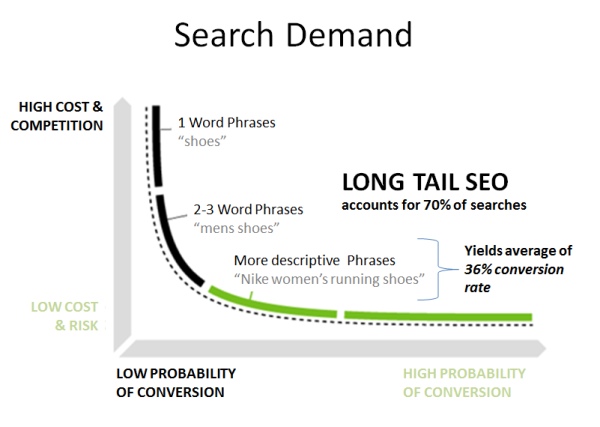SEO best practices rapidly evolve.
What worked 5 years ago is often useless now, but many companies are slow to embrace change.
The same techniques that once propelled a company to the top of search rankings can now permanently sink them.
If you're using any of the five toxic tactics I've referenced below, it's time to move on.
1) Keyword Stuffing
Keyword stuffing is the practice of unnaturally placing keywords into the content throughout your website, in an attempt to make your website's pages rank higher for those keywords in organic search results.
It's a practice which has a negative impact on the experience of website visitors when they read your content, and one which no longer brings benefit to search rankings. Google updates like Panda actually penalise websites which go overboard with keyword stuffing, and Google is progressively moving away from using keywords to rank results. Instead of matching keywords, Google is now trying to determine the intent behind a search, and identify the questions a piece of content answers.
2) Low Quality Guest Posting
Guest posting is a valuable marketing technique when done properly. It can dramatically increase your reach, when your content is published on popular blogs, and a link or two from a high authority website can help with your SEO.
Low quality guest posts tend to come as a result of trying to secure posts only for their SEO value. For example, spamming lots of other website owners and asking them to publish low quality content (to their low quality blogs) or even paying for your posts to be published.
Google has begun to penalise websites using low quality guest posts for SEO purposes. Not to mention, publishing low quality content that links to your company website damages your brand.
3) Duplicating or Spinning Content
At times it can be tempting to duplicate content. For example, say you have a page on your website which discusses "red widget manufacturing". It could be tempting to copy and paste all the content from that page, do a mass replace on the "red" for "blue", and publish that as a new page, in the hope that the first page will rank for "red widget" related searches, and the second page for "blue widget" related searches.
Google is good at detecting attempts to game the search engine in this way, and will now penalise it. If you're going to create two separate pages in this fashion, you need to ensure that the content is unique. Sit down, and write the page's content out again, preferably without the first page on the top of your mind.
Some companies try to get around this by using a technique called "article spinning". That is, running the article through a piece of software that attempts to swap words and phrases out for other words and phrases that mean the same thing. On the surface, this looks like an easy way to generate new, unique content from one article. The reality unfortunately is that articles produced by software like this rarely read well (and so convert poorly).
Google is getting much better at identifying content generated by spinning software too, and penalising websites that use it.
4) Low Quality Link Building
With links being an important part of improving your search engine rankings, it can be tempting to secure as many as you possibly can. This can lead to all sorts of low quality link building techniques, from spamming blog comments to trying to drop links to your website in every forum post you make.
Google's penguin update was developed to devalue low quality link building like this, and if you're not careful, building low quality links in a deliberate manner like this can result in penalties, too. Forget about trying to build as many links as possible, and instead focus on creating value for your website visitors. If you produce great content and share it with your network, over time people will link to it. These links will count for much more than any spam you can put out there.
If you want to secure more links, focus on building your network, and better distributing your content instead.
5) Short Tail Obsession
Going back a few years, a key focus of most SEO strategies was trying to rank for the most competitive short tail keywords. For example, if you were a red widget manufacturer, you might try to rank #1 for "red widgets". To do this, SEO professionals would build as many links to a page as they could with the text "red widgets", and use many of the techniques referenced above, too.
The problem is, with these techniques being devalued, it's now very difficult to rank for the most competitive keywords, and many marketers are beginning to realise that the real value isn't even in the short tail keywords, but the long tail instead.
Whilst individual short tail searches drive much more traffic than individual long tail searches do, when combined, long tail searches make up 70% of all searches, as illustrated by the diagram below:

Not to mention, when you think about it, which of these two searches is more likey to convert into a sale when they visit your website?
- Red widgets
- How to bulk buy large red widgets
#2 indicates greater intent, and is more specific, meaning traffic you gain from it is of higher value. Modern SEO is all about creating lots of exceptional content, which addresses specific questions that concern your buyer personas. It's a key part of inbound marketing.
The content you create will rank for the high intent long tail keywords within your industry, and given time drive the traffic and types of lead your business needs to grow.




